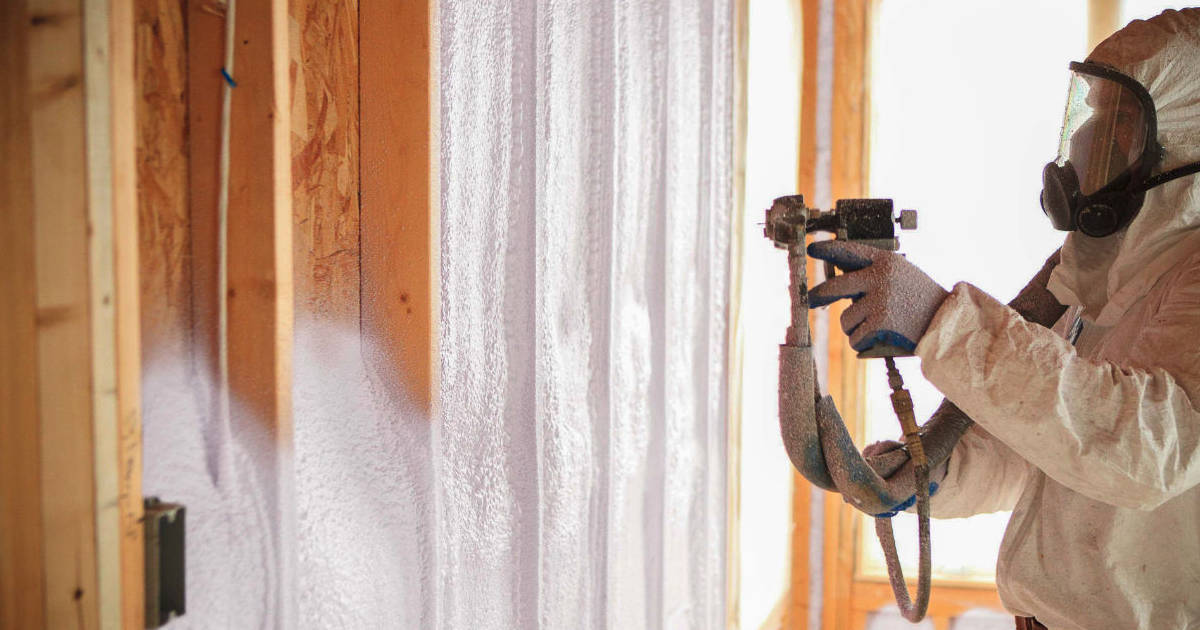Spray foam insulation provides one of the highest R-values per inch available, making it a key element in improving a building’s thermal performance. The R-value measures how well insulation resists heat flow; a higher R-value means better resistance and improved energy efficiency. Spray foam’s chemical makeup allows it to expand and seal gaps, creating an effective barrier that enhances its R-value and minimizes heat loss through air leaks.
This article delivers a clear explanation of spray foam insulation R-values, compares the types, outlines technical details, and shares factors to consider before selecting spray foam. It will help you understand how spray foam contributes to energy savings and indoor comfort.
Types of Spray Foam and Their R-Values
Spray foam insulation mainly comes in two types: open-cell and closed-cell. Open-cell foam has an R-value typically between 3.5 and 4.0 per inch. It is lighter and less dense, providing good insulation and acting as an air barrier, but it does not block moisture well. This makes it ideal for interior walls and attic spaces where breathability is needed.
Closed-cell foam offers a higher R-value, around 6.0 to 7.0 per inch. It is denser and forms a stronger air and vapor barrier, making it better suited for exterior walls, roofs, and basements where moisture control and structural support are important. Closed-cell foam also adds rigidity to structures.
Bonus Tip: Closed-cell foam not only insulates better but can also strengthen building components due to its density.
How R-Value Influences Thermal Performance
The R-value indicates how effectively insulation slows heat transfer. Higher R-values reduce heat flow, improving energy efficiency and maintaining comfortable indoor temperatures. Spray foam’s high R-value means thinner layers can achieve the same insulation level as thicker layers of traditional materials like fiberglass or cellulose.
Open-cell spray foam, with an R-value near 3.5 to 4, requires more thickness to reach a target R-value. Closed-cell spray foam achieves the same thermal resistance with about half the thickness, making it valuable where space is limited.
Besides R-value, spray foam’s ability to seal cracks and gaps is critical. Traditional insulation may leave air leaks, reducing overall effectiveness. Spray foam’s air-tight expansion enhances the building envelope, cutting drafts and lowering heating and cooling demands.
Technical Characteristics of Spray Foam Insulation
Open-cell spray foam has a lower density, approximately 0.4 to 0.6 pounds per cubic foot. It offers a moderate compressive strength and acts as an effective air barrier but is permeable to moisture vapor, allowing walls to breathe.
Closed-cell spray foam is much denser—about 1.7 to 2 pounds per cubic foot—with high compressive strength. It provides a strong vapor barrier, low water absorption, and excellent resistance to air infiltration.
Thermal conductivity reflects the insulation’s efficiency. Open-cell foam’s thermal conductivity ranges from 0.033 to 0.040 W/m·K, while closed-cell foam ranges from 0.020 to 0.028 W/m·K, indicating better insulation performance in closed-cell products.
Bonus Tip: Spray foam expands significantly after application—open-cell foam expands roughly 100 times its liquid volume, while closed-cell foam expands about 30 to 50 times—ensuring tight cavity filling.
Market Insights on Spray Foam Insulation
The global spray foam insulation market continues to grow rapidly, driven by increasing demand for energy-efficient buildings. Projections estimate an annual growth rate exceeding 7% through 2030. Currently, closed-cell spray foam accounts for the majority of sales due to its superior insulating and moisture-resistant properties.
Homes insulated with spray foam often see energy savings between 20% and 30% on heating and cooling, according to energy efficiency reports. These savings stem from both its high R-value and its ability to stop air leaks, which traditional insulation materials do not address as effectively.
Factors to Consider Before Choosing Spray Foam
When deciding whether to use spray foam and which type to select, consider these key factors:
- Climate: Closed-cell foam is preferable in colder or more humid climates because it acts as a vapor barrier. Open-cell foam suits moderate climates where vapor permeability is beneficial.
- Cost: Closed-cell foam is generally more expensive, often costing 50% to 100% more per board foot than open-cell foam, but it delivers higher R-values and moisture protection.
- Application Area: For walls, roofs, and basements where moisture resistance and structural support matter, closed-cell foam is recommended. For interior walls and attics where sound absorption and breathability are priorities, open-cell foam is effective.
- Installation: Spray foam installation requires trained professionals to ensure proper safety measures and application. Improper installation can reduce performance or cause issues like gaps or off-gassing.
- Local Building Codes: Check codes for minimum insulation R-values and vapor barrier requirements, which may influence foam choice and thickness.
Bonus Tip: In some cases, combining spray foam with other insulation types can optimize thermal performance and cost.
Common Questions About Spray Foam Insulation R-Value
How does spray foam compare to traditional insulation?
Spray foam provides higher R-values per inch and creates an air seal, reducing heat loss more effectively than fiberglass or cellulose, which do not prevent air leaks.
Does spray foam’s R-value change over time?
Closed-cell foam maintains its R-value well because it resists moisture. Open-cell foam can lose some effectiveness if it absorbs water, but good installation minimizes this risk.
Is thicker spray foam always better?
Increasing thickness improves R-value, but after a point, cost and space constraints limit thickness. Also, air sealing is just as important as thickness for energy savings.
Are spray foam materials environmentally safe?
Newer closed-cell foams use low-global warming potential blowing agents. Open-cell foam uses water-based blowing agents, which are more environmentally friendly.
Make the Right Decision
Spray foam insulation R-value is fundamental to its role in improving thermal performance and reducing energy costs. Choose the type that fits your climate, budget, and application needs. Consider professional installation and local regulations carefully to ensure the best results. Evaluate your project’s unique conditions to select spray foam that delivers lasting comfort, efficiency, and value.
Spray Foam Insulation R-Value Explained: FAQ
What is the typical R-value per inch for spray foam?
Open-cell spray foam ranges from 3.5 to 4.0, while closed-cell ranges from 6.0 to 7.0.
How does spray foam improve energy efficiency?
It slows heat transfer and seals air leaks, reducing the need for heating and cooling.
Can spray foam be used in all climates?
Yes, but closed-cell foam suits cold or humid climates better; open-cell foam is suitable for moderate climates.
What happens if spray foam is installed poorly?
Poor installation can cause gaps, poor adhesion, moisture issues, and reduce insulation effectiveness.
How thick should spray foam be?
Thickness depends on the required R-value and space, but closed-cell foam achieves higher insulation with less thickness.









